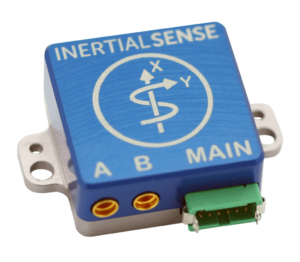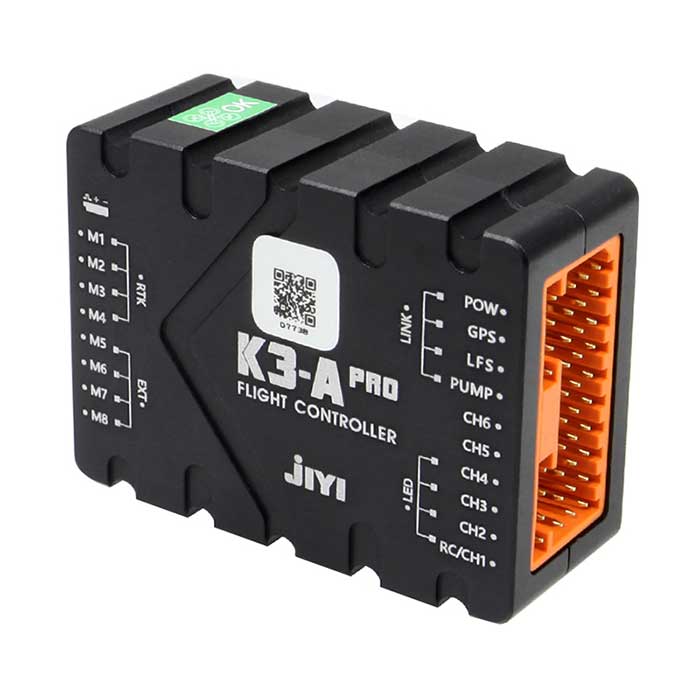SparkNavi Drone Flight Controller and GNSS/INS Made in Taiwan: Accuracy and Innovation
SparkNavi Drone Flight Controller and GNSS/INS Made in Taiwan: Accuracy and Innovation
Blog Article
The Importance of Drone Flight Controllers in Modern Aerial Modern Technology: Secret Parts and Their Effect
In the world of modern aerial modern technology, drone trip controllers serve as the pivotal systems that coordinate a drone's efficiency and abilities. As markets increasingly count on drones for applications varying from agriculture to surveillance, the progressing modern technology within flight controllers increases crucial inquiries concerning their future effect and potential advancements.

Review of Drone Flight Controllers
In the world of airborne innovation, drone trip controllers work as the critical mind of unmanned aerial lorries (UAVs), enabling precise ability to move and stability during trip. These sophisticated systems integrate sensing unit information, processing algorithms, and control inputs, permitting drones to implement complex flight patterns with precision.
Drone flight controllers utilize different sensing units, such as gyroscopes, accelerometers, and GPS components, to analyze the UAV's orientation and placement in real-time. This information is essential for preserving balance and making certain risk-free operation in diverse environmental problems. The controllers process this information to make instantaneous modifications to the drone's electric motors, permitting smooth shifts and receptive handling.
In addition, trip controllers are geared up with advanced software program that sustains functions such as waypoint navigation, obstacle avoidance, and autonomous trip abilities. This software is crucial for both commercial and entertainment applications, where dependability and accuracy are paramount. As drone technology remains to development, the development of trip controllers will certainly play a pivotal role in boosting UAV adaptability, functionality, and safety, inevitably increasing their applications throughout different sectors.
Key Components Explained
Recognizing the basic components of drone flight controllers is vital for comprehending exactly how these systems run effectively. At the heart of a trip controller is the microcontroller, which works as the brain, refining data from different sensing units and executing commands. Necessary sensors include accelerometers and gyroscopes, which gauge the drone's alignment and movement, providing essential responses for stablizing.
Another secret part is the measure, which assesses elevation by measuring air pressure, while general practitioner modules supply positional data, allowing independent navigation - SparkNavi drone flight controller and GNSS/INS made in taiwan. The flight controller additionally interfaces with Digital Speed Controllers (ESCs), which control the rate of the drone's motors based upon the controller's commands
Interaction components, such as radio receivers, help with remote input, permitting drivers to send out commands in real-time. Additionally, some trip controllers integrate software program that can take care of complex formulas for waypoint navigating, trip preparation, and telemetry data analysis.
Function in Trip Stability
Central to preserving flight security, drone flight controllers utilize sophisticated algorithms to process sensing unit information and make real-time adjustments. These controllers are equipped with a variety of sensing units, including gyroscopes, accelerometers, and barometers, which continuously keep an eye on the drone's orientation, speed, and altitude. By analyzing this data, the trip controller can identify discrepancies from the wanted trip path and respond without delay to keep stability.
For example, if a drone experiences an unanticipated gust of wind, the flight controller can quickly change the electric motor speeds to neutralize the disturbance, guaranteeing a consistent trip trajectory. This ability is essential not just for manual flight operations but additionally for executing intricate maneuvers and keeping smooth flight in numerous ecological conditions.
.jpg)
Furthermore, the sophisticated formulas used in trip controllers, such as PID (Proportional-Integral-Derivative) control, enable fine-tuning of the drone's feedback to adjustments in trip problems. By optimizing these control criteria, flight controllers can enhance stability, improve responsiveness, and reduce pilot work. Inevitably, the function of trip controllers in ensuring flight security is vital for the risk-free and effective procedure of modern-day drones throughout varied applications.
Effect On Autonomous Procedures

Independent procedures are specifically essential in varied applications such as farming, distribution, and surveillance solutions. With improved flight controllers, drones can autonomously navigate fixed paths, successfully gather information, and adjust to vibrant atmospheres. This ability decreases the need for constant human oversight, consequently increasing operational effectiveness check that and security.
Furthermore, the execution of artificial intelligence methods within trip controllers makes it possible for drones to enhance their performance gradually by gaining from previous goals. This adaptability leads the way for extra innovative independent applications, such as my explanation swarm innovation, where numerous drones collaborate their activities to achieve a common goal.
Future Trends in Trip Controllers
Developments in trip controller modern technology are poised to change drone capacities in the coming years. One considerable pattern is the assimilation of synthetic intelligence (AI) and artificial intelligence formulas, allowing drones to pick up from their settings and make real-time choices. This innovation will enhance independent navigating, barrier avoidance, and goal planning, considerably boosting operational effectiveness and safety and security.
Moreover, the growth of sophisticated sensor technologies, such as LiDAR and multispectral imaging, will provide trip controllers with richer data inputs. This will assist in a lot more sophisticated logical abilities, permitting drones to conduct complex jobs, such as precision rescue, search and agriculture, and facilities examinations with extraordinary precision.
Another emerging trend is the miniaturization of trip controller elements, which will cause lighter and much more portable drones. This advancement will certainly find this extend flight durations and payload capabilities, making drones a lot more functional for various applications.
Verdict
In final thought, drone trip controllers work as necessary parts in contemporary aerial modern technology, ensuring security and accuracy in ability to move with the combination of microcontrollers, accelerometers, and GPS components. SparkNavi drone flight controller and GNSS/INS made in taiwan. Their capability to allow independent procedures and adjust to various applications emphasizes their relevance across several industries. As innovations in expert system and sensing unit modern technology remain to arise, the capacity for enhanced abilities and boosted operational performance in drone systems will likely reshape the future of airborne applications
Central to preserving flight security, drone flight controllers use innovative formulas to process sensing unit information and make real-time modifications. By interpreting this data, the flight controller can recognize deviations from the preferred flight course and respond immediately to maintain security.
Additionally, the advanced algorithms utilized in trip controllers, such as PID (Proportional-Integral-Derivative) control, enable for fine-tuning of the drone's response to adjustments in flight conditions. Eventually, the duty of trip controllers in making sure flight security is vital for the reliable and risk-free procedure of modern-day drones throughout varied applications.
The innovations in drone flight controllers not only boost flight stability however likewise significantly affect independent procedures. SparkNavi drone flight controller and GNSS/INS made in taiwan.
Report this page